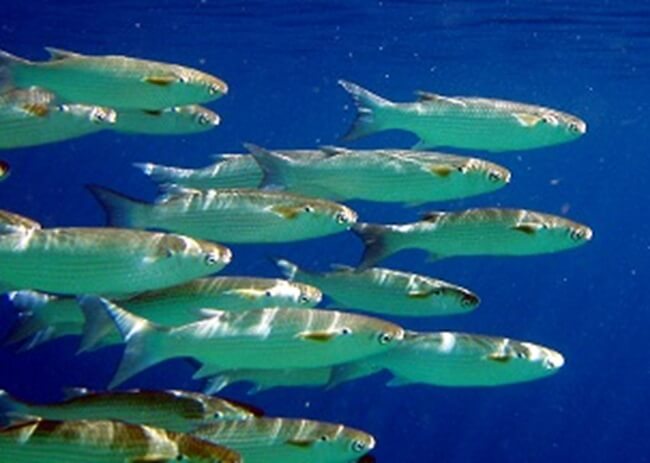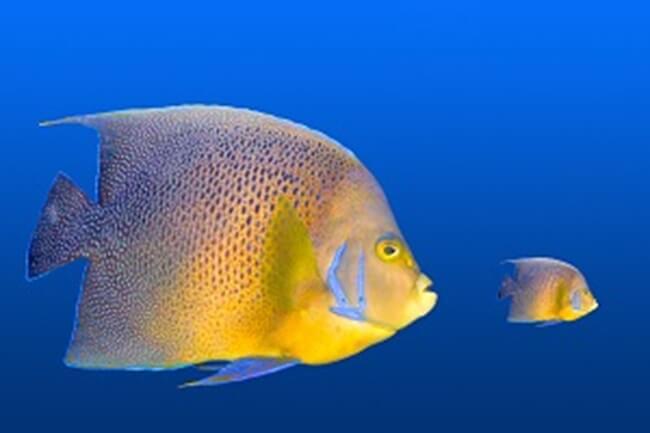What is the best publication strategy in science?
Young scientists often get conflicting advice on how they should publish. Every generation of young scientists has to address similar questions: Should I publish several smaller papers or focus on one big paper with a high impact factor? What is the effect of my publication strategy on my scientific career and the possibility of raising grant money? How important is my publication list for a non-academic career?
To develop the optimal publication strategy for you, it is absolutely crucial to know which career you want
Do you want to become a university professor or administrative staff member? It is smart to make an early career choice about whether you should become a professor.
Ask yourself: Is it worth it to become a professor? Otherwise, you may waste a lot of time and energy pursuing the wrong career path.
Do you envision a career in the industry or the public health sector?
Most PhD students and many postdocs have no clear idea about their future careers. About 90-95% of all PhD holders find a job outside academia. Still, most postdocs (up to 75%) wish to pursue an academic career (although the statistics clearly indicate that more than 90% will find a job elsewhere).
Reflect carefully on how to find the best job for you in science!
If you want to become a professor, your publication list and grant money are the most critical assets
To pursue a career as a professor, you must qualify in several categories that will be evaluated by selection committees. The two most important assets are your publication list and your ability to get funding.
Aim for an ‘excellent’ publication list – but be aware: the definition of ‘excellence’ differs in every domain.
In some faculties, writing one big book is more important than publishing many papers in some faculties. In other domains, conference proceedings are the main and most crucial output, while in life sciences, publications with high-impact factors and many citations are valued most.
If you decide to pursue an academic career, understanding the most important bibliometric markers and learning how to write your articles faster and more professionally is essential.
However, many universities also request other qualifications such as excellence in teaching, international mobility, and success with getting grants. Read more here: Am I doing enough for my scientific career?
If you want a job in the industry sector, your publication list might be helpful to show your commitment and expertise
Your publication list may be helpful if you want to find a job in the pharmaceutical industry. However, this list is often of secondary importance, and the technical and transferable skills you have learned are much more valued.
Companies typically look for ambitious and highly qualified young scientists who have experience in specific techniques and who may be potential group leaders.
Your publication list only shows that you are ambitious, know specific methods, and can finish projects successfully. It reveals nothing about your communication and leadership skills.
If you want a corporate career or wish to become an entrepreneur, you must subsequently acquire essential skills to become a leader. Ideally, create a leadership action plan to learn the skills to qualify you better.
If you want a job outside of research, your publication list may even be counterproductive
For many jobs, an impressive publication list may even be a disadvantage because it may create the impression that you have already “lived too long in the academic ivory tower.”
Consider carefully your chances of finding a job as a scientist and whether a postdoc and additional publications really serve you: Will I find a job as a scientist?
It may also mean that you desperately tried to pursue an academic career without success, and now you have to find something else, which is your second choice.
Thus, for your career planning, you should consider the following:
- How long it takes to finish your doctorate?
- Do additional high-impact papers and a postdoc serve your career goals?
- How long you should be a postdoc?
- Should you invest more or quit your postdoc?
What are low and high impact factors?
For a career in science, understanding the most important bibliometric markers is vital. Among all the bibliometric markers, impact factors are still the most relevant at the beginning of your scientific career, while later citations become more important.
It is a notoriously tricky debate about what ‘low’ and ‘high’ impact factors are. In some domains, the best journals have an impact factor below 4; in others, the best journals can be above 20 (e. g., Nature Immunology).
As a rule of thumb, I would suggest the following arbitrary classification, which I have seen being used in several commissions for biomedical sciences in Europe: < 1: too low, 1-3: low, 3-5: intermediate, 5-10: high, > 10: excellent.
Choosing the right journal and publication type
Learning this took me a long time, but it is one of the most convincing strategies to get more papers published in better journals: You must learn to identify the right journal for your research project.
Thus, you must understand the scope of each journal to match your research area and findings with the journal’s focus and target audience.
Try to predict the editorial strategy of your target journal
Unfortunately, the information in a journal’s website’s “scope” section can be misleading. You must check carefully whether the journal has published articles similar to your current study during the last three years. If not, your chances are probably low.
Here are just a few simple examples to clarify what I mean:
You probably have no chance if you want to submit an animal study, but the specific journal has only published human studies in the last five years.
If you have performed studies with human organoids in vitro, a clinical journal is not the right choice.
For healthcare professionals, journals focusing on clinical trials, medical devices, or new pharmaceutical drugs might be the best fit.
You get the point.
Thus, you must invest much time in analyzing the editorial strategy of potentially relevant journals.
How do I choose a suitable journal for my work?
When choosing journals to submit your work to, start by considering a few simple rules:
- The journal’s scope: have similar articles been published during the last three years?
- The journal’s impact factor: is your study good and complex enough for this journal?
- The journal’s readership: Who is the journal’s target audience? Is your research likely to be of interest to the journal’s readers?
- The journal’s reputation: How well-respected is the journal in your field? Does the journal have a good track record of publishing high-quality research?
Be cautious of predatory journals!
Don’t fall for predatory publishers!
Peer-reviewed journals are usually the safest bet for quality. Thus, they must have a high-quality peer review process. Always opt for well-known academic journals indexed in reputable databases like Google Scholar, Web of Science, or Scopus.
To protect yourself, do some safety checks before you submit a paper. Check the white lists of trustworthy journals and publishers available on the internet – or at least google the journal name and the term “predatory” to see whether something comes up.
Open-access publishing allows a broad audience to access your work without a paywall, enhancing the impact of your research. However, open-access publishing is a big business; therefore, it is expensive and attracts many unethical persons.
Thus, if you consider publishing articles or book chapters, it is not a sufficient quality criterion if a journal is listed in directories like the Directory of Open Access Journals or Directory of Open Access Books.
Always google the publisher, journal name, and the term “predatory” to see whether something comes up.
Use your social media and online presence to your advantage
To pursue a successful career in science, you should develop scientific independence and become an expert in your field.
To increase the visibility of your work, you should increase the impact factor of your publications.
Although impact factors are heavily criticized as a measurement of scientific quality, there is still no convincing better alternative available. Thus, impact factors are still used to evaluate your performance when applying for jobs or funding.
In addition, your citation score (i.e., how often other authors cite your papers) becomes increasingly important as your career advances. Thus, you should increase the number of citations.
For example, use your online and social media presence to disseminate your scientific publications. Online platforms are valuable tools for sharing research results and new knowledge with key opinion leaders, healthcare professionals, and the general public, leading to broader public debates. Your online presence can make your work more visible and attract potential audiences.
Make all contributors happy
Understanding publishing politics and publication ethics is paramount, especially for new PhD students and early-career researchers.
Make sure that everyone who made a substantial contribution is credited, and always comply with the copyright policies of the journal you submit to. The impact of your research can be significantly affected by ethical lapses.
Create publication titles that raise the interest of the reader
Choosing compelling publication titles and writing a compelling abstract is crucial. Your title should be concise and encapsulate your paper’s key message but should also raise readers’ interest.
New researchers often are unaware of the marketing aspects of publishing. Editors are keen to get more clicks and social media shares for their journals’ articles. These are strategic decisions to increase the visibility of their journal.
Similarly, write compelling abstract titles when presenting your work at scientific meetings. It attracts more visitors to your posters or talks.
Among these, potential collaborators or representatives of pharmaceutical companies might be interested in developing new drugs based on your findings.
Balancing quantity and quality: the number of publications
For early-career researchers, the number of publications may often seem like the end-all measure of success. While quantity does matter to some extent, the prestige and impact factor of your particular publications are just as important.
Consider carefully how many co-authorships you pursue compared to first or last authorships, which have much more value. In addition, do not overestimate the value of co-authorships on high-impact papers.
My supervisor and I have differing publication strategies
If your supervisor wants a publication strategy different from yours, then there are sometimes possibilities to negotiate. It would be best to do this early to avoid authorship disputes.
Depending on the personality types of your supervisors, they may be open to a different approach if you deliver good results. You must know what they expect from you as ‘good results.’ Often, an open discussion can clarify this quickly.
My supervisor forces me to publish small papers
Sometimes, young scientists are delusional about the possibility of publishing very high, and their supervisor does not want to waste money and time on a ‘lost case.’
When the supervisor seeks to stop or finish the project, usually, it is good advice to accept this decision and focus on the next project.
In my experience, the supervisors always win because they provide the grant money and the infrastructure and can limit access.
Some supervisors simply do not want to increase the impact factor of their publications because they lack ambition or are convinced that they cannot get higher or publish in a niche with traditionally low impact factors.
Thus, a young scientist may end up running against psychological walls. Some young scientists are incredibly ambitious and bring a project to a new level, even above the average publication level of the group.
However, I would consider this an exception. Most supervisors are grateful for such a success and will interpret it as a result of their excellent leadership.
My supervisor forces me to publish big papers
Publishing big papers with high impact factors has several advantages and disadvantages for young scientists. The benefits are clear: a high-impact publication as the first or last author (even as equally contributing second or last-before-last author) can greatly boost your career in science.
Unfortunately, a big paper is often prepared over many years, including the work of several young scientists who cannot all become first authors. Publications with three or more equally contributing first authors and two or three equally contributing senior authors are frequently seen.
In my experience, the value of an authorship position is very critically discussed and often questioned when somebody is the fifth of six equally contributing authors – even on a Science or Nature paper.
Some supervisors aim for very high-impact journals, and their ambition leads to success. Sometimes, principal investigators are delusional about the possibility of publishing very high.
In both cases, the paper’s publication is delayed due to additional experiments needed, repeated rejections, and/or multiple revisions due to excessive reviewer requests.
As a result, you may be moved to the second or third position because somebody else has worked on this more or after you have already left the lab.
I lost my first author position
In the worst case, you end up as a co-author, although you have contributed substantially and may even have been the first author on earlier versions of the paper.
In my experience, it is challenging to argue with the principal investigator about which contributor deserves which authorship position because the principal investigator will determine the value of the contribution.
Often, existing institutional rules are too vague to help.
This can be very unfair. If the PI is fair, you may get some form of compensation, but to my knowledge, there are no clear rules regarding this so far.
If you know about convincing rules anywhere, please comment below to inform us!
Should I aim for multiple co-authorships?
Based on my experience in many commissions that judge grant proposals, I am convinced of the simple truth that a LONG publication list is better than a SHORT publication list.
If there are ’empty’ years between publications, this publishing strategy will be judged negatively, even if a Nature paper is on the publication list.
A typical comment may be: “Well, he published a Nature paper in 2020 but nothing in the following years; there is considerable doubt about this person’s scientific productivity and independence”.
It is crucial to know that your scientific independence will be severely questioned when you have predominantly or even exclusively co-authorships.
It is neither a good idea to concentrate exclusively on a long list of co-authorships nor to focus on many co-authorships on high-impact papers if the number of your first authorships is very limited.
This is particularly true when a person is an expert in a ‘supporting technique’ such as histology, electron microscopy, imaging, or behavioral testing.
As a rule of thumb, I would suggest that the number of co-authorships should not exceed the number of first/last authorships. Read more about this subject here: Should I aim for multiple co-authorships to extend my publication list?
Should I aim for co-authorships on high-impact papers?
The same is true for co-authorships on high-impact papers. When a person has several co-authorships on Nature papers but none or only a few first/last author papers, their scientific independence will be severely questioned. Similarly, high-impact co-authorships do not help much when the average impact factor of the first/last author papers is low.
In conclusion, I would suggest not wasting your time with very high co-authorships when the impact factor of your first/last authorship publications stays low.
Focus on first and last authorships!
For PhD students, first authorships are the most relevant because, at this career stage, last authorships are rather challenging to get. In contrast, postdocs must aim for senior authorships to show scientific independence when applying for grants and future positions.
Read more about this subject here: Should I aim for co-authorships on high-impact papers?
Should I aim for a very long list of low-impact papers?
In some disciplines, especially the clinical research departments, you will see huge publication lists with hundreds of publications with very low impact factors, such as surgery, internal medicine, or dermatology. These lists may include clinical cases of one page, short reviews, and position papers.
The conclusion is easy – only if you want to work in these domains does it make sense to follow this strategy.
There is one important caveat – when you apply for grant proposals and the reviewers are NOT clinicians, they will judge this negatively. In contrast, a commission composed primarily of clinicians will value it much higher. If in doubt, go for the high-impact papers (see below).
Should I publish negative results?
This is a tricky question that deserves a more complex discussion. Publishing negative findings may ruin your career, but not publishing them may be considered unethical.
Read more here: Should I publish negative results, or does this ruin my career in science?
Develop a publishing strategy depending on your career goals!
Considering the previous thoughts, it is evident that every young scientist has to find a personal publication strategy that may substantially differ from the strategies of other young scientists in the same research group or institution.
PhD students often do not have many options, and the supervisor dictates the approach. Postdocs may have more freedom. However, learning to write journal articles faster and more professionally is always a good idea for young scientists.
When asking your supervisors and colleagues for advice, remember that they may not have reflected on their publication strategy and may just follow the procedure they have learned from their own supervisor or requested by their institution.
Interestingly, in most institutions, several persons follow completely different publication strategies. Analyze carefully the results of each type of strategy!
You might even realize that you can not reach your career goals in this job and should quit your postdoc and find a better position.
I do not know which career I want!
I systematically ask groups of young researchers in life sciences whether they know their future careers. “Do you want to work in academia (five hands) — or in industry (three hands)— or somewhere else (one hand)?”
Most hands go up when I ask, “Who does not know yet?” (350 hands). Thus, most young scientists live with a dilemma – they want to keep all doors open and do not want to make the wrong decision.
As a result, they have no publication strategy and will probably follow the strategy of their supervisor.
Read more here: I have no idea where I will be in two years
When in doubt – publish high!
If you do not know which career to focus on, it is difficult to work hard and efficiently. Aim for high publications if you do not have a suitable alternative (Peace Corps, science administration, EU commission, journalism, etc.).
Do not waste your time with low impact factors. Often, you have to invest the *same* amount of effort in publishing a low-impact paper without any appreciation afterward. Systematically learn to increase the impact factor of your publications.
Aim for higher impact papers – at least slightly above the average level of your group. Then you will feel much more appreciated later. You may even receive a scientific prize, which always helps your career because prizes are a ‘sign of excellence.’
It also makes it easier to decide whether an academic career is the right choice and whether becoming a professor is worth it.
Sooner or later, you will have to make this decision anyway. Read more here: Should I become a professor? and How to become a professor.
Acknowledgments
Thanks to Prof. John Creemers, KUL, and Prof. Dearbhaile Dooley, University College Dublin, who critically read an earlier version of this article. I have used AI systems, including Grammarly and ChatGPT, to enhance the English and comprehensiveness of this article. This post may contain affiliate links, meaning I get a small commission if you decide to purchase through my link. Thus, you support smartsciencecareer at no cost to you!
Recommended reading
- Do I need Nature or Science papers for a successful career in science?
- Should I aim for co-authorships on high-impact papers?
- Should I aim for multiple co-authorships to extend my publication list?
- Should I publish negative results, or does this ruin my career in science?
- How to become an expert in your scientific field?
- Research funding – Should I submit grant proposals under my supervisor’s name?
- Scientific independence – how to develop and demonstrate it?
- How long does it take to complete a doctorate?
- For how long should I be a postdoc?
- Should I become a professor?
- How to become a professor?
- What is tenure?








Very useful overview for junior scientists, but certainly as well for senior scientists who struggle to continue a academic career or to go for a non-academic one. Good job Sven!
Thank you. Very informative.
Hi
Thanks so much It was very useful for me.very informative.I am very delighted to register this web site.thanks so much my professor
Yours truly
Azadeh
Thanks for the question. We will look into it.